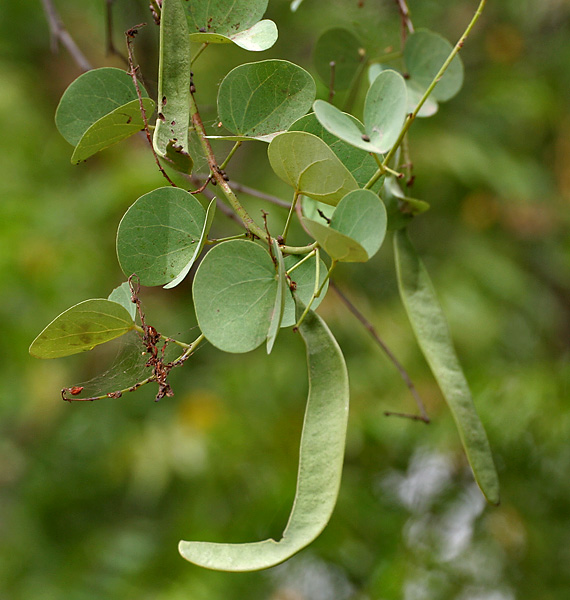How the Himalayas has a solution to all medical problems?
- EIH User
- July 18, 2024

For millennia, the Himalayas have had profound significance in South Asia’s history and cultural identity; this vast mountain range is not just a barrier between the Tibetan plateau and the plains of the Indian subcontinent, it is also a cultural identity to not just people living in the region but also the whole subcontinent. This article attempts to understand the medicinal wealth of the area and its threatened and endangered status. Also, it looks at how many of these medicinal plants are used in curing and treating diseases and how they are gaining popularity and rising as “herbal medicines”.

Himalayas (source: Shivam Maini, Wiki Commons: https://commons.wikimedia.org/w/index.php?curid=85257198)
The Himalayas are a vast mountainous range with five different biogeographical zones: trans-Himalaya, north-west, central, and east. Due to the vast area and various habitats, Badola quotes Dhar, who mentions that the Himalayan habitat comprises 21 vegetation types, 10 forest types and 11 forest formations. Because of such rich diversity, the Himalayas are blessed with abundant herbs, many of which help treat diseases. Despite being rich in resources, it is sadly being highly exploited, and many of these medicinal species in the Himalayas are threatened.
STORY OF HIMALAYAN FORESTS

Ketaki fruit (source: B.navez – Wiki Commons: https://commons.wikimedia.org/w/index.php?curid=315958)
Dr K Biswas, Editor of The Himalayan Journal, wrote in 1964 that of about 18,000 flowering plants known to grow in India, at least 2,500 species possessed medicinal properties, and 25% were present in the Himalayas.
Due to the vastness of the Himalayas, different zones have different types of forests. The north-western (mainly Himachal Pradesh) and western Himalayas have dense tropical forests in the warm, lowland Bhabhar and Siwalik hills, deciduous mixed forests in the middle mountains, and scattered arctic-type and alpine vegetation at higher altitudes. The Lesser Himalayas (lower altitudes) have trees such as Pinus roxburghii (Indian Pine) and Alnus nitida ( west Himalayan alder) on the slopes due to lack of good soil. In contrast, Alnus nepalensis(Nepali Alder or Utis) occupy the moist, rich slopes. The Eastern Himalayan have an extensive canopy of leaf forests.
These Himalayan medicinal plants, as mentioned before, are not just part of the indigenous medical systems and food but also cultural identities.
He mentions that many people in these regions have used traditional Himalayan medicine for diseases, such as leaves of the fern Adiantum capillus-veneris (southern maidenhair fern) mixed with pepper, which are used to cure fever and, when combined with honey, to relieve cold. He also mentions that the decoction of the leaves cures pain in the stomach.

Southern maidenhair fern ( Source: Len Worthington Wiki Commons: https://commons.wikimedia.org/w/index.php?curid=93896840)
He notes that the flowers of Ketaki(Pandanus) found in the foothills of the Sikkim Himalayas are not just symbols of love but also have a religious significance where the flower is not used to worship Lord Shiva due to its scent, which disturbed his trance. The flowers, however, are used to flavour drinking water and induce sleep. The seeds, he mentions, tend to cure wounds in the heart.
TREATMENT OF DISEASES
Before the rise of the Western medical system, many people depended on indigenous practices, which relied heavily on plant-based treatment of diseases. K Biswas mentions that Tibetan Ma Huang or Ephedra sinica was used to treat asthma for a long time. Even Dolomiaea costus, more commonly known as Kuth or Costus, is used to treat colds, asthma, and skin diseases.
Even though these medicinal plants have been used to treat diseases, with the advances and the rise of a scientific methodology of experiments and research-based backing, these medicinal plants have come under scrutiny. However, despite this, these traditional Himalayan medicines have been popular in the alternative medical systems. However, these medicinal plants are presently being studied and tested for various diseases to incorporate them into the standard treatment and curing.

Ma Huang( Source: By alexlomas Wiki Commons:https://commons.wikimedia.org/w/index.php?curid=6343381)
This process of studying and experimenting on medicinal plants for application in standard medical treatment is more popularly seen in treatments for cancer. Cancer is one of the most severe diseases, infact, it is one of the most common causes of mortality, almost next to cardiovascular disease. This article heavily relies on understanding cancers and medicinal plants in treating cancer from the academic paper “A Review of Medicinal Plants of the Himalayas with Anti-Proliferative Activity for the Treatment of Various Cancers”. This paper mentioned, reviewed, and studied 33 different medicinal plants and parts constituting phytochemicals primarily responsible for treating cancer. Phytochemicals are chemicals of plant origin. This paper stated that the advantages of using medicinal plants for treating cancer over synthetic medication are due to fewer side effects, high potency and less patient toxicity. Apart from that, plants are also affordable and eco-friendly as medicines. As is the case with medication, similarly, different medicinal plants help treat various types of cancers. In the list of 33 medicinal plants, some mentioned are Achyranthes aspera (prickly chaff flower), Allium sativum (garlic), Cannabis sativa(Marijuana), Camellia sinensis (tea plant), Bauhinia racemosa (bidi leaf tree), and Urtica dioica(Nettle leaf). This paper concluded that although plants have fewer side effects and are accessible and affordable, it is still essential to further research on the development of Phyto medicine research.

bidi leaf tree (source: J.M.Garg -Wiki Commons:https://commons.wikimedia.org/w/index.php?curid=4310029)
THREATENED MEDICINAL PLANTS
Badola writes that since the 1980s, there has been a significant rise in the quantity of raw, wild plant material used by pharmaceutical companies worldwide. Even the global consumption has increased. Consequently, many plants have come under scrutiny for the presence of active medicinal components. He writes that in recent years, India has been ranked as the second largest volume exporter of raw herbal drugs, following the lead of China.
Due to the rise in demand, various developmental and anthropogenic pressures exist on the forest’s unscientific exploitation of medicinal plants. This affects the environment and the people associated with and dependent on these resources for generations.

Nettle plant (source: Dominicus Johannes Bergsma Wiki Commons:https://commons.wikimedia.org/w/index.php?curid=35081580)
A report by the Himalayan Forest Research Institute(HFRI), Shimla, looked into these aspects of large-scale exploitation of resources and livelihood and came up with various initiatives. They first surveyed the locations to understand the know-how of a specific region. Then, to sustainably grow and harvest these plants, they developed and designed things such as “multiple nursery planting bars”, which helped in spacing at the field or commercial farming. They also established other projects for rural communities to generate sustainable income and conducted workshops, despite the involvement of various departments, such as Forest Departments, and conducting different training programs. Various issues remain, such as accessibility, social and cultural factors, technical know-how, etc. Even though ideas of conservation and protection have been implemented, there is still a long way to go for sustainable practices.
Overall, these endangered medicinal plants in the Himalayas are highly crucial to not just the people living in the region, but also patients, pharmaceutical companies and the global trade; hence, it is essential to conserve and protect this rich repository of plants and forests for not just sustainable use but also for the livelihood of the people and the environment and not to hurt the diversity of the area.
REFERENCES:
Badola, H.K. and Aitken, S. (2003) ‘The Himalayas of India: A treasury of medicinal plants under siege,’ Biodiversity, 4(3), pp. 3–13. https://doi.org/10.1080/14888386.2003.9712694.
HIMALAYAN FOREST RESEARCH INSTITUTE (HFRI) (2019) Medicinal plants of North-Western Himalayas: Initiatives and Achievements of HFRI, HIMALAYAN FOREST RESEARCH INSTITUTE (HFRI). HIMALAYAN FOREST RESEARCH INSTITUTE (HFRI). http://www.indiaenvironmentportal.org.in/files/hfri-300611.pdf.
Regassa, H. et al. (2022) ‘A Review of Medicinal Plants of the Himalayas with Anti-Proliferative Activity for the Treatment of Various Cancers,’ Cancers, 14(16), p. 3898. https://doi.org/10.3390/cancers14163898.
THE MEDICINAL PLANTS OF THE HIMALAYA
(1964). https://www.himalayanclub.org/hj/25/9/medicinal-plants-of-the-himalaya/.
- Biodiversity of medicinal plants in Himalayas
- Cancer-fighting plants in the Himalayas
- Conservation of Himalayan medicinal species
- Endangered medicinal plants in Himalayas
- Himalayan herbs for natural treatment
- Himalayan medicinal plants benefits
- Himalayan plant-based disease treatments
- Medicinal plants from Himalayas for cancer treatment
- Threatened medicinal species in Himalayas
- Traditional Himalayan medicine for diseases

















